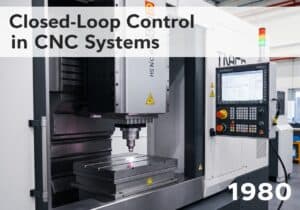A methodology using statistical tools, including control charts, to monitor and control a process, ensuring it operates at its full potential to produce conforming products.
- Methodologies: Lean Sigma, Manufacturing, Quality
Statistical Process Control (SPC)

Statistical Process Control (SPC)
- Continuous Improvement, Control Chart, Process Capability, Process Improvement, Quality Control, Quality Management, Statistical Process Control (SPC), Waste Reduction
Objective:
How it’s used:
- Involves collecting data on key process or product characteristics, plotting this data on control charts, and analyzing these charts to identify and distinguish between common cause and special cause variations, aiming to reduce variation and improve process capability.
Pros
- Leads to improved product quality and consistency; Reduces waste, rework, and inspection costs; Provides data-driven insights for process improvement; Empowers operators to monitor and control their processes.
Cons
- Requires a foundational understanding of statistics and control chart interpretation; Implementation can be complex and requires management commitment; Data collection must be accurate and consistent; May not be suitable for all types of processes (e.g., very short runs, highly custom).
Categories:
- Lean Sigma, Manufacturing, Quality
Best for:
- Improving and maintaining process stability, reducing variability, and ensuring products consistently meet specifications.
Statistical Process Control (SPC) finds extensive application in manufacturing, healthcare, food production, and any industry where process stability and quality are paramount. For example, in automotive manufacturing, SPC is employed to monitor the assembly line processes, ensuring that components consistently meet the required tolerances, thereby enhancing product safety and reliability. In the healthcare sector, SPC can evaluate patient care processes, leading to improved treatment outcomes by minimizing variability in medical procedures. This methodology is particularly beneficial during the production phase of projects, where ongoing monitoring of product characteristics helps identify issues in real-time, allowing for timely interventions. Team members such as quality engineers, process operators, and production managers typically initiate SPC practices, cultivating a culture of quality awareness and continuous improvement within the organization. Training sessions might be conducted to ensure all participants are skilled in using control charts and analyzing data trends effectively. The statistical data generated through SPC not only fuels process improvement initiatives but also serves as a basis for regulatory compliance in industries subject to stringent quality standards. Furthermore, adopting SPC reduces the likelihood of product recalls, leading to improved customer satisfaction and loyalty, which are crucial for a company’s long-term success in a competitive market.
Key steps of this methodology
- Select key process or product characteristics for monitoring.
- Establish control limits based on historical data.
- Create control charts to visualize process data over time.
- Analyze control charts to identify common cause variations.
- Investigate special cause variations when they occur.
- Implement corrective actions to address special causes.
- Monitor ongoing processes and adjust control limits as necessary.
- Regularly review and update control charts to reflect changes in the process.
- Train staff on SPC techniques for better process oversight.
Pro Tips
- Utilize Attribute Control Charts for qualitative data to detect shifts in product quality that traditional variables charts may miss.
- Incorporate multivariate control charts to analyze interactions between multiple process factors, enhancing understanding of variability.
- Implement real-time data visualization tools to facilitate immediate feedback loops, enabling quicker adjustments to maintain control limits.
To read and compare several methodologies, we recommend the
> Extensive Methodologies Repository <
together with the 400+ other methodologies.
Your comments on this methodology or additional info are welcome on the comment section below ↓ , so as any engineering-related ideas or links.
Historical Context
1974
1974
1978
1980
1980
1980
1980
1972
1974
1975-06-01
1980
1980
1980
1980
1980
(if date is unknown or not relevant, e.g. "fluid mechanics", a rounded estimation of its notable emergence is provided)















Related Posts
Musculoskeletal Discomfort Questionnaires
Multivariate Testing (MVT)
Multiple Regression Analysis
Motion Capture Systems
MoSCoW Method
Mood’s Median Test